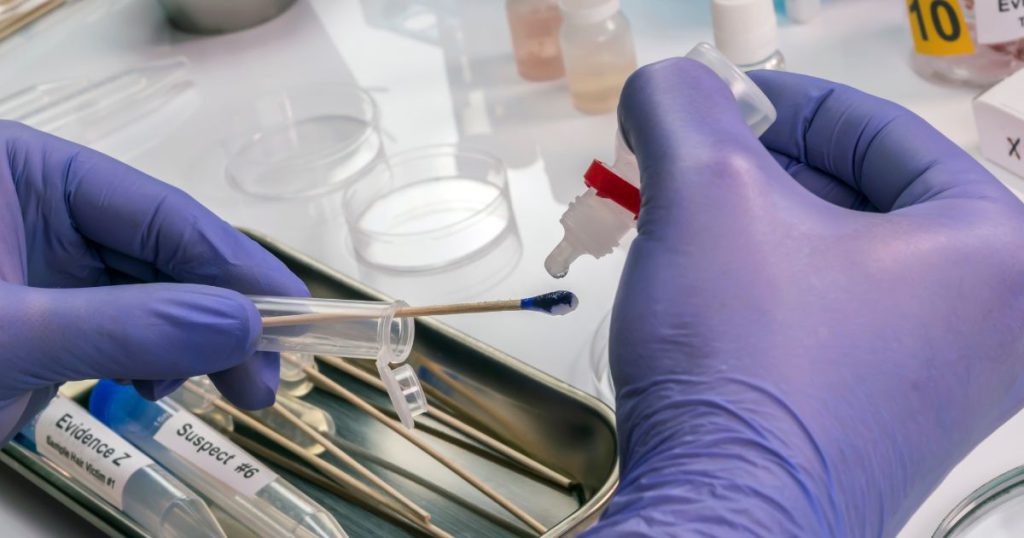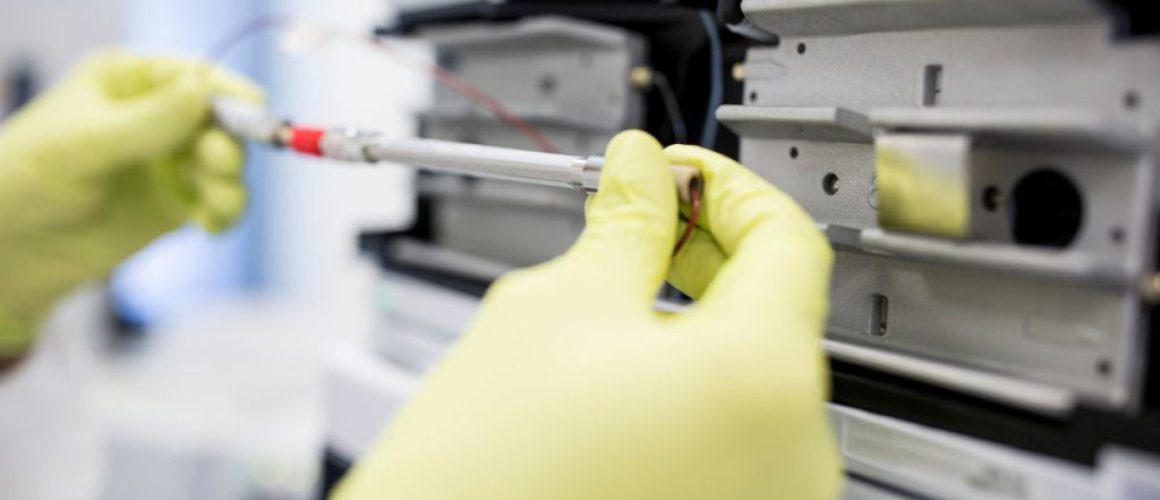The Impact of Technology on Forensic Medicine
Table of Contents
Ever wondered about the impact of technology on forensic medicine? Well, it’s like the plot twist in your favorite detective show – unexpected but absolutely game-changing! Stick around as we unravel this thrilling scientific saga, making forensics feel less like a mystery and more like a friend.
Introduction
The impact of technology on forensic medicine cannot be overstated. With each technological advancement, we gain a new tool to delve deeper into the complexities of crime scene investigations, unmasking the truth hidden in the smallest of details. The dawn of advanced forensics has undoubtedly reshaped the field, and the story of its evolution is as fascinating as the mysteries it helps to solve.
The truth of forensic science is that it’s always in evolution. New methods and technologies always push the boundaries of what is possible.
Dr. Mike Silverman, Forensic Pathologist
What is the Study of Forensic Medicine?
Forensic medicine employs scientific methods to answer questions of legal importance, often related to criminal investigations. For this, it relies heavily on the cutting-edge advancements in technology. From a humble microscope to state-of-the-art DNA sequencers, each innovation has left a lasting imprint on the practice of forensic science.
Key Technologies in Forensic Medicine
| Technology | Role in Forensic Medicine |
|---|---|
| DNA Sequencing | Identification and conviction of suspects, also helpful in victim identification |
| Fingerprint Analysis | The age-old yet reliable method for suspect identification |
| Digital Forensics | Helps in extracting and analyzing data from electronic devices |
| Facial Recognition | Aiding in suspect and victim identification, especially from CCTV footage |
The Impact of Technology on Forensic Medicine
The Evolution of Forensic Science
Forensic sciences have come a long way from the days of simple fingerprinting. The leap in technological advancements has expanded the scope of investigations, making them more accurate and reliable. It has introduced us to revolutionary techniques like DNA profiling, mass spectrometry, and digital forensics, which have significantly improved the crime-solving process.
It’s not just about the addition of these advanced techniques, but also the sophistication they bring. These scientific methods have introduced an unprecedented level of precision, allowing forensic scientists to explore cases at a level that was unimaginable a few decades ago. DNA profiling, for instance, gives us the ability to identify individuals with a degree of certainty that was previously confined to the realm of science fiction. Mass spectrometry allows for the detection and quantification of even the most minute traces of substances, providing invaluable data in drug or poison cases. Digital forensics, a field that wouldn’t have even existed a few decades ago, has become a vital tool in an increasingly digital world, tracing electronic trails left by perpetrators. It’s this continual evolution of forensic sciences, fueled by technology, that is transforming our understanding of evidence and the stories they hold.

DNA Analysis: A Technological Marvel
DNA analysis, the hero of modern forensic science practice, has been a game-changer. It’s akin to having a universal identifier for every individual, and it’s so accurate that the chance of error is one in billions. This powerful tool has not only accelerated the process of identifying individuals but has also enabled us to uncover the truths hidden in the genetic code of a single hair follicle or a drop of blood.
The profound impact of DNA analysis doesn’t stop there. We’ve delved into the world of ‘Forensic Genomics’, an intriguing arena where technology and science intertwine to create a robust investigative tool. Techniques like next-generation sequencing (NGS) and short tandem repeats (STRs) analysis are pushing the boundaries of what we can achieve. NGS, for example, can provide detailed genomic data from minute samples, offering incredible resolution in our investigations. STR analysis, on the other hand, focuses on specific sections of DNA with patterns that vary between individuals, acting as a unique genetic fingerprint. Picture it as the most comprehensive barcode scanning system, but for our genes. The precision these techniques provide is revolutionizing forensic science, making them an invaluable tool in crime scene analysis and forensic investigations.
Here’s a list of some intriguing cases solved with the help of technology in forensic medicine:
- The Green River Killer: Using DNA analysis, investigators were able to link numerous unsolved murders to Gary Ridgway, resulting in his conviction.
- The BTK Killer: Dennis Rader, the notorious BTK killer, was caught thanks to a digital forensics examination of a floppy disk he sent to the police.
- The murder of Conrad Truman’s wife: Advanced imaging techniques revealed that the trajectory of the bullet was inconsistent with Truman’s account, leading to his arrest.
The Power of Next-Gen Sequencing
Next-generation sequencing is another technological marvel that has revolutionized forensic medicine. This advanced method allows for rapid sequencing of large segments of DNA, making it an invaluable tool for analyzing complex cases involving multiple contributors or degraded samples.
Taking a step deeper into this powerful technology, we have Whole Genome Sequencing (WGS). With WGS, we can examine an individual’s entire genome, which was once thought to be an unattainable task due to its magnitude and complexity. The utility of WGS in forensic medicine is unparalleled. It enables us to unravel the most intricate genetic landscapes, identify minute mutations, and pinpoint previously indiscernible genetic markers. This isn’t just identifying a haystack in a field, but locating and understanding every single straw within. This level of analysis can provide unmatched resolution and clarity to forensic investigations, truly embodying the potential of technology in this realm.
Technology is advancing, changing, and evolving our practice of forensic science. With every new innovation, we come closer to the truth.
Dr. Henry Lee, Renowned Forensic Scientist.
Digital Forensics: Unmasking Cybercrimes
With the surge in digital crimes, the technological impact on forensics has also expanded into the virtual realm. Digital forensics involves the recovery and investigation of material found in digital devices, often leading to crucial evidence in solving cybercrimes.
But how does it work, you ask? Well, digital forensics functions on a basic premise – that every interaction leaves a trace. Even as we navigate the seemingly intangible world of the Internet, our actions, be they innocent or nefarious, leave behind digital footprints. A simple email, a transferred file, a chat message – all of these can serve as pieces of a larger puzzle. Digital forensics involves the intricate work of collecting, preserving, and analyzing these electronic breadcrumbs. With the advancements in forensic tools and technology, even data that is thought to be deleted or hidden can often be retrieved and used as compelling evidence. The digital landscape is ever-evolving, and so is the field of digital forensics, constantly adapting to stay one step ahead in this high-stakes game of cyber cat and mouse.
Technological Advancements and their Impacts
| Technological Advancement | Application in Forensic Medicine |
|---|---|
| DNA Analysis | Identification of individuals, familial relations, building physical profiles |
| Next-Generation Sequencing | Analysis of complex cases with multiple contributors, degraded samples |
| Digital Forensics | Recovery of crucial evidence from digital devices, solving cybercrimes |
| Advanced Imaging Techniques | Conducting ‘virtual autopsies’, detailed cause of death analysis |
| Mass Spectrometry | Detection and identification of chemicals, drugs, toxins |
Advanced Imaging Techniques
Advancements in technology have also made a significant impact on forensic pathology. Techniques like computed tomography (CT) and magnetic resonance imaging (MRI) allow pathologists to conduct ‘virtual autopsies,’ reducing the need for invasive procedures and providing a more detailed analysis of the cause of death.
The beauty of these advanced imaging techniques lies in their ability to unveil what the naked eye cannot see. With CT scans, for example, we’re able to generate three-dimensional models of the internal structures of a body. It’s like peeling back layers of an intricate puzzle, revealing hidden clues and patterns that might otherwise remain undiscovered. MRI, on the other hand, is akin to having a magnifying glass that can zoom into the microscopic level, offering insights into the soft tissues with unprecedented detail. It’s almost as if we have unlocked a new level of perception, a new dimension of understanding. As a result, we’re not just cutting down on invasive procedures, but we’re also amassing a wealth of data that can significantly enhance our understanding of different pathological conditions and causes of death. It’s a testament to the transformative power of technology in forensic medicine, continually pushing the boundaries of what we know and what we can achieve.
Forensic Toxicology and Mass Spectrometry
Mass spectrometry, an analytical technique that measures the mass-to-charge ratio of ions, has revolutionized forensic toxicology. It can detect and identify even trace amounts of chemicals, drugs, or toxins in a sample, making it a vital tool in forensic investigations.
The influence of mass spectrometry on forensic toxicology is beyond profound. It takes us deeper into the hidden labyrinth of complex compounds, where each component can be a critical clue to solving a case. The most striking feature of this technology is its ability to discern elements or compounds based on their specific mass-to-charge ratios. Imagine having a puzzle piece so unique, it can only fit into one particular slot. That’s precisely what mass spectrometry brings to the table in forensic toxicology. Each ion’s distinct mass-to-charge ratio becomes a unique identifier, a fingerprint if you will, that enables analysts to piece together the molecular puzzle. And it’s not just about identifying what’s in a sample, but also about understanding its concentration. This is where mass spectrometry really shines, providing quantitative data that helps determine the dosage or level of exposure. Such precise information can be pivotal, especially in cases of suspected poisoning or drug overdose, where understanding the ‘how much’ can be as important as the ‘what’.
Conclusion to The Impact of Technology on Forensic Medicine
As we delve deeper into the era of technology, there are bound to be more advancements that will reshape forensic medicine’s landscape. In the words of scientist and novelist, Arthur C. Clarke, “Any sufficiently advanced technology is indistinguishable from magic.” With the technological marvels we witness in forensic science, we’re truly experiencing this magic.
The transformation we witness today in forensic medicine is just the beginning. The future holds even more fascinating possibilities, and each technological advancement will serve as a powerful tool in our quest for truth and justice. Keep exploring this captivating world of forensic medicine, where science meets justice, and every piece of evidence can tell a tale. For more insights into this captivating field, continue reading here.
Call to Action
As we continue to witness these remarkable advancements in technology, we can look forward to a future where forensic science becomes even more precise and efficient. The impact of technology on forensic medicine is a testament to human ingenuity and our relentless pursuit of the truth. Stay tuned to this category to learn more about this fascinating field. If you’re interested, check out my previous posts on What is the Study of Forensic Medicine?, Forensic Toxicology: Unraveling the Cause of Death and The Role of DNA Analysis in Forensic Medicine.
Frequently Asked Questions
What is the impact of technology on forensic medicine?
Technology has greatly revolutionized forensic medicine, making it more accurate, reliable, and efficient. With the help of advancements like DNA analysis, next-generation sequencing, digital forensics, and advanced imaging techniques, investigators can solve complex cases, identify individuals, determine cause of death more accurately, and even solve cybercrimes.
How has DNA analysis changed forensic medicine?
DNA analysis has made the identification of individuals in forensic investigations more accurate. It can help determine familial relationships, identify human remains, and even build a physical profile of an individual based on genetic data.
What role does next-generation sequencing play in forensic medicine?
Next-generation sequencing allows for the analysis of complex cases with multiple contributors, and can even help extract usable data from degraded samples. It offers higher resolution and more data compared to traditional sequencing methods.
What is digital forensics? How does it help in forensic medicine?
Digital forensics involves the recovery and investigation of material found in digital devices. This has become particularly crucial in the digital age, helping solve cybercrimes, find digital evidence of traditional crimes, and even uncover data relevant to the cause and time of death in certain cases.
How have advanced imaging techniques improved forensic medicine?
Advanced imaging techniques, like CT and MRI scans, have made ‘virtual autopsies’ possible. These non-invasive methods provide a detailed analysis of cause of death, identify trauma and injury, and can even create 3D reconstructions of the event leading to death.
Can you provide some examples of cases where technology played a crucial role?
Notable examples include the case of the Green River Killer, where DNA analysis led to the conviction of Gary Ridgway, and the case of the BTK Killer, where a digital forensics examination of a floppy disk led to the arrest of Dennis Rader. Advanced imaging techniques were also instrumental in proving the guilt of Conrad Truman in the murder of his wife.
Sources
ResearchGate: the impact of new technologies on forensic science
Sean Schepers is a third-year Medical Technology student at Mahidol University with a passion for all things health and medicine. His journey into the world of medicine has led him to explore various fields. Sean's blog posts offer a unique perspective, combining his academic insights with personal experiences. When he's not studying or blogging, Sean enjoys keeping up with politics and planning his future career in medicine.
In addition to his studies, Sean serves as the chairman of the Rights, Liberties, and Welfare Committee, a role that reflects his commitment to advocacy and social justice. Beyond his academic pursuits, Sean offers tutoring services in English and Biology, further demonstrating his dedication to education and mentorship. His journey is one of continuous discovery, and he invites others to join him as he explores the dynamic and transformative world of medical technology.


